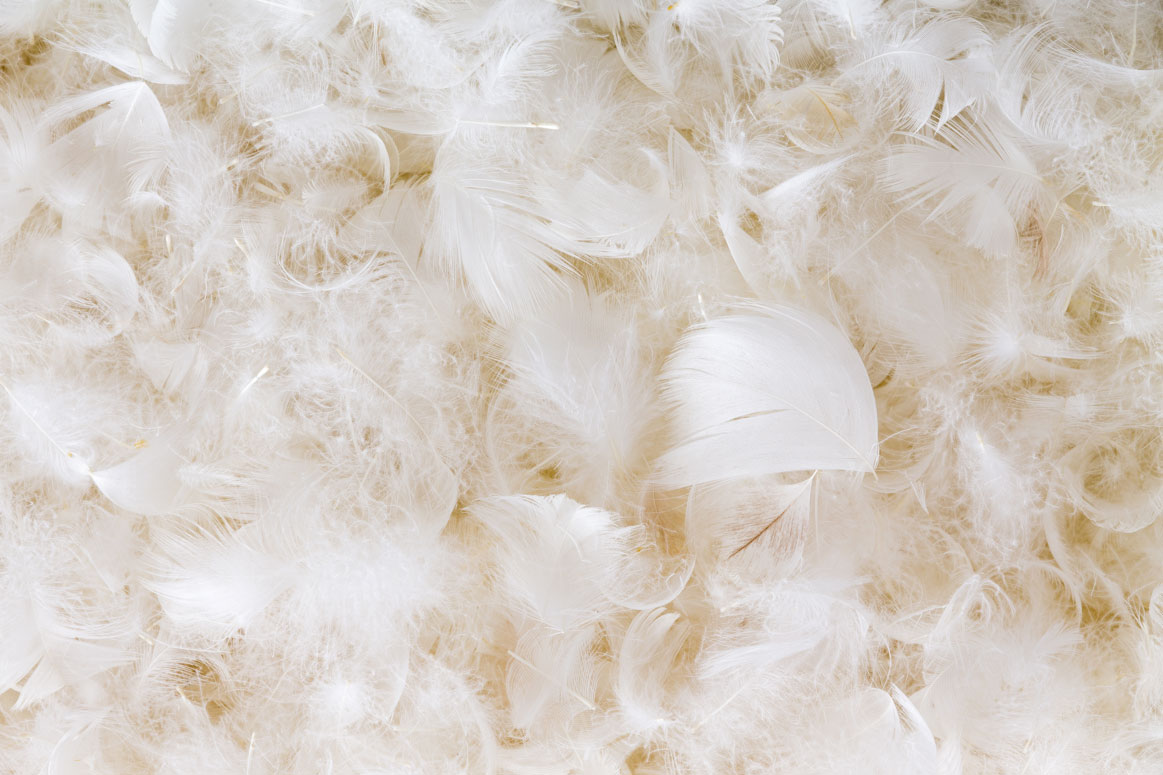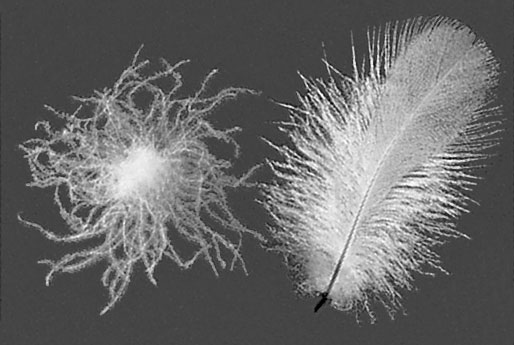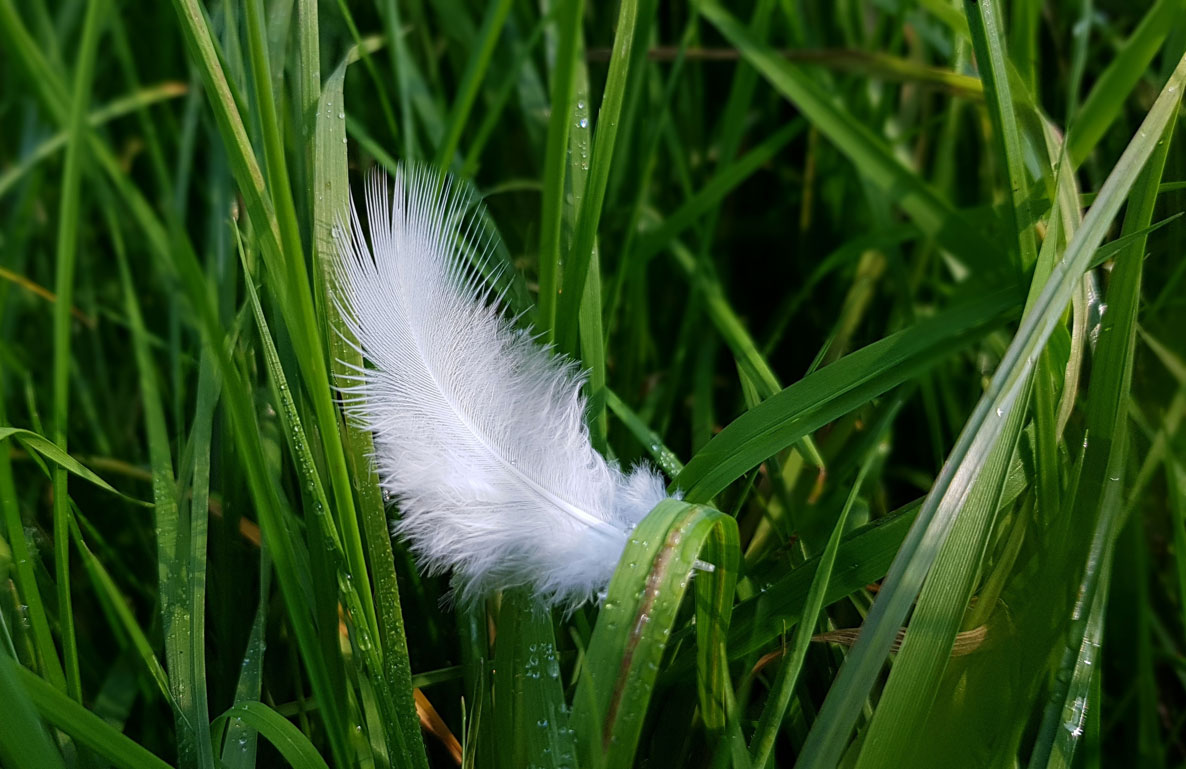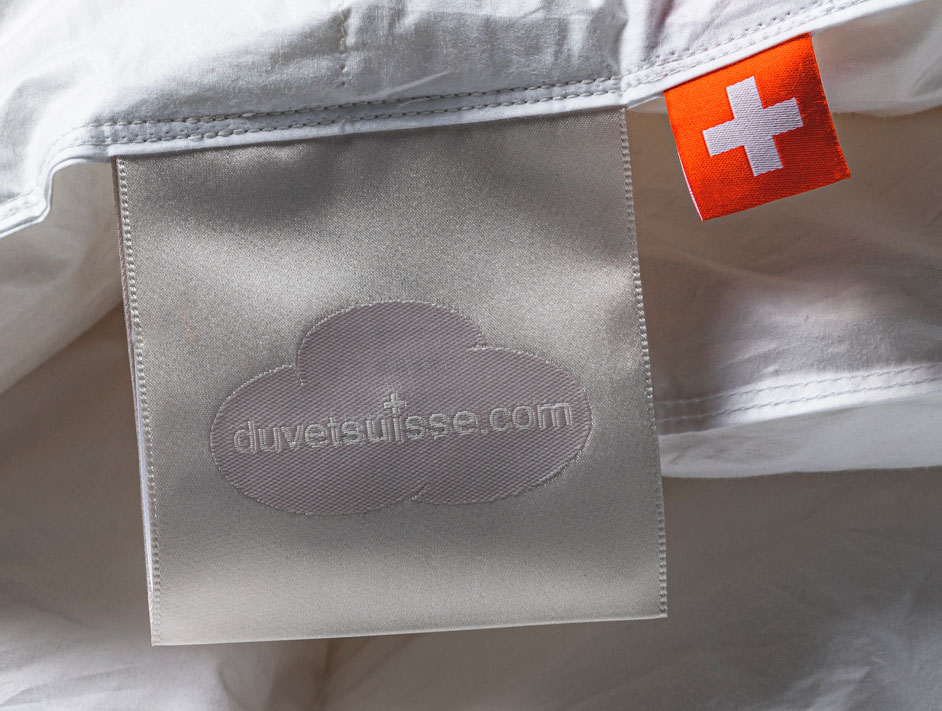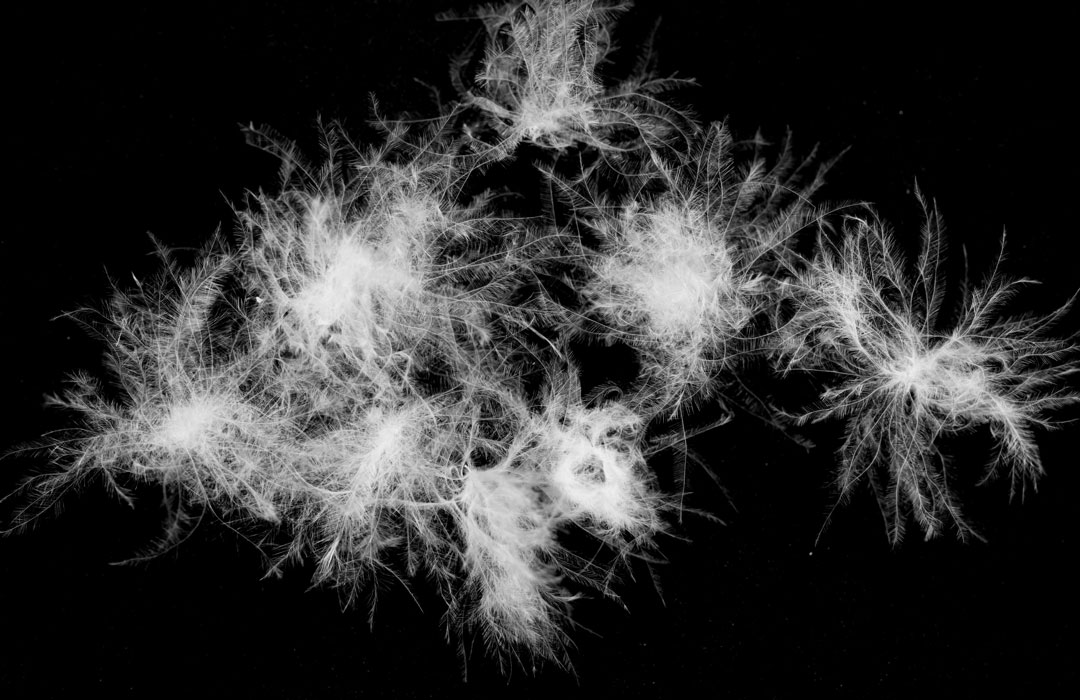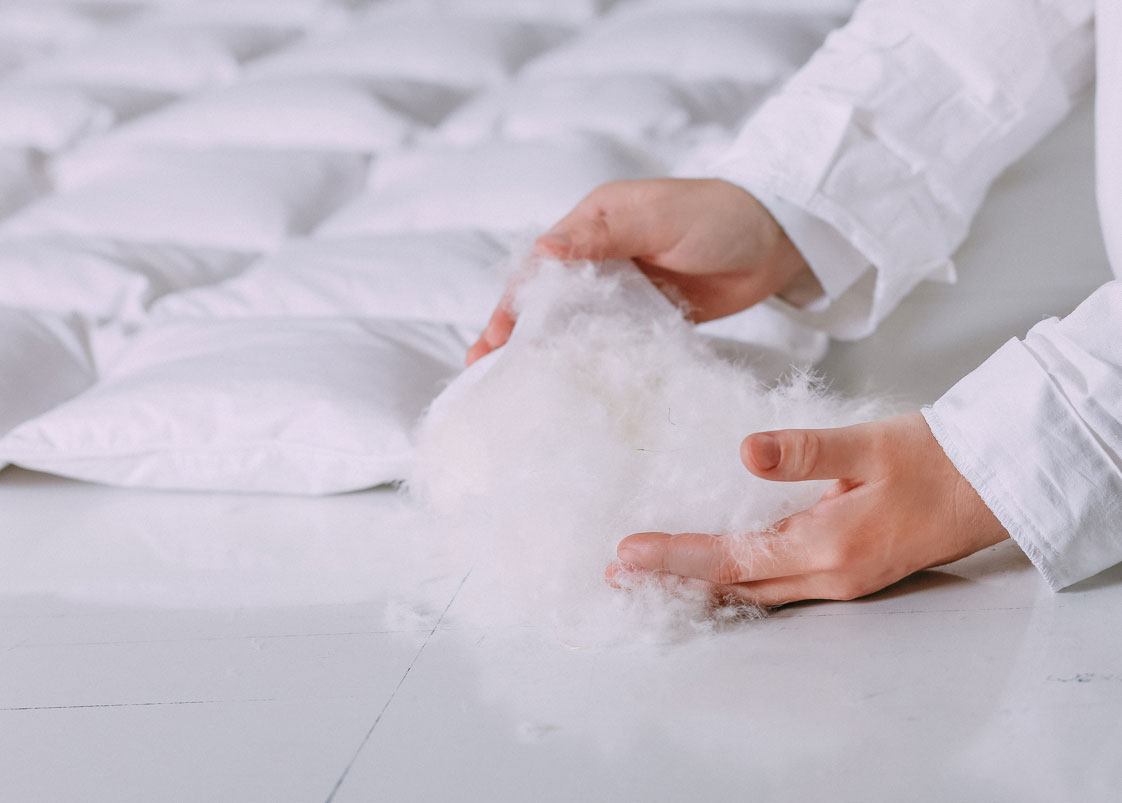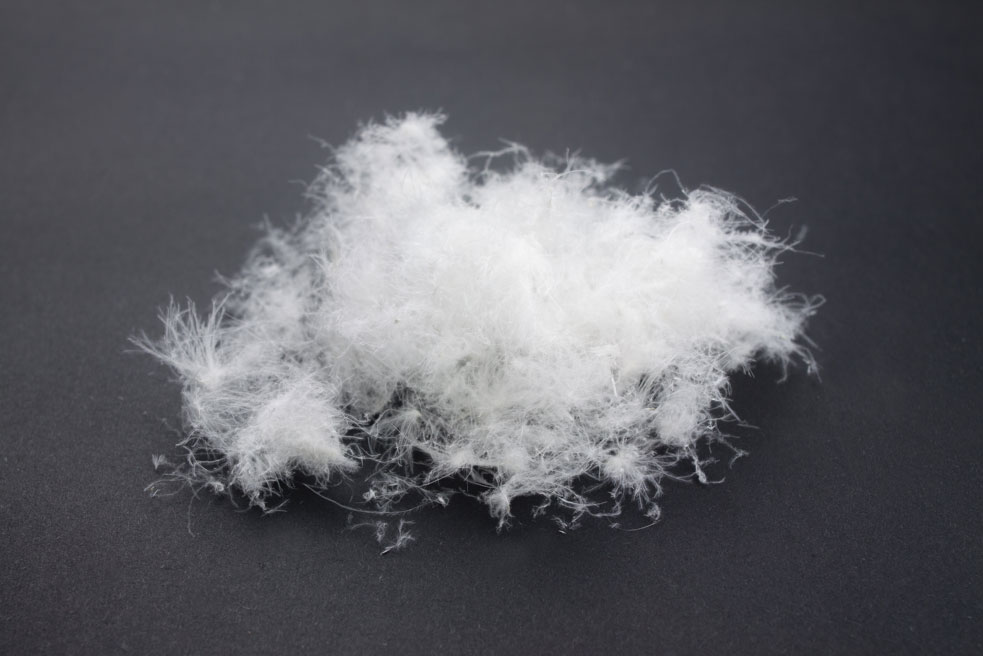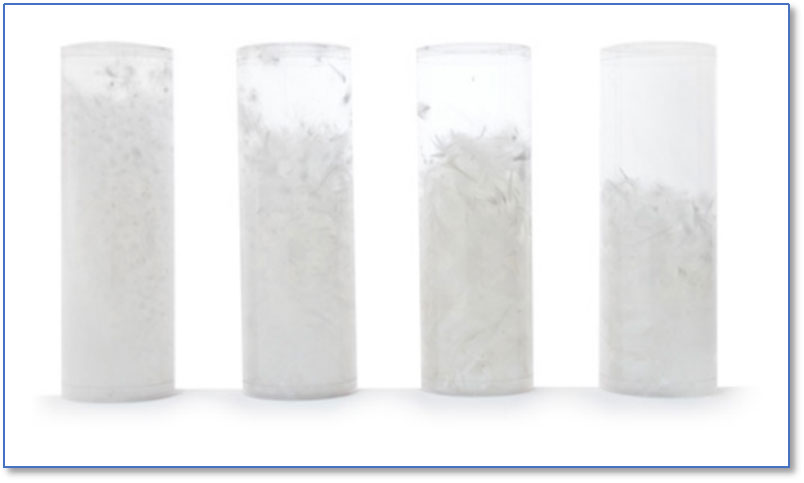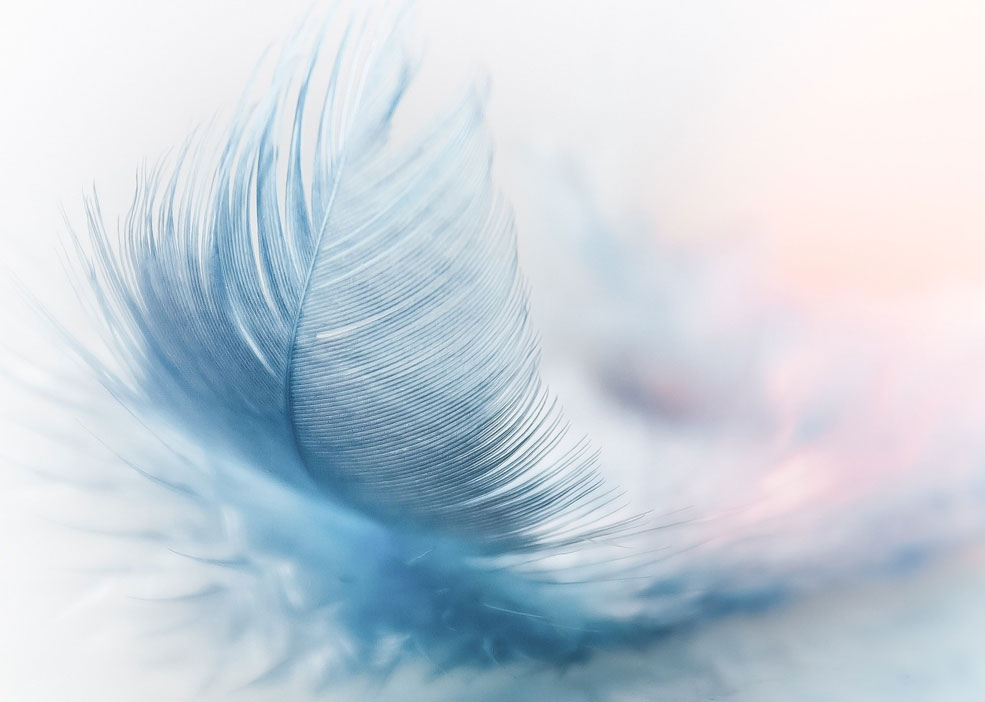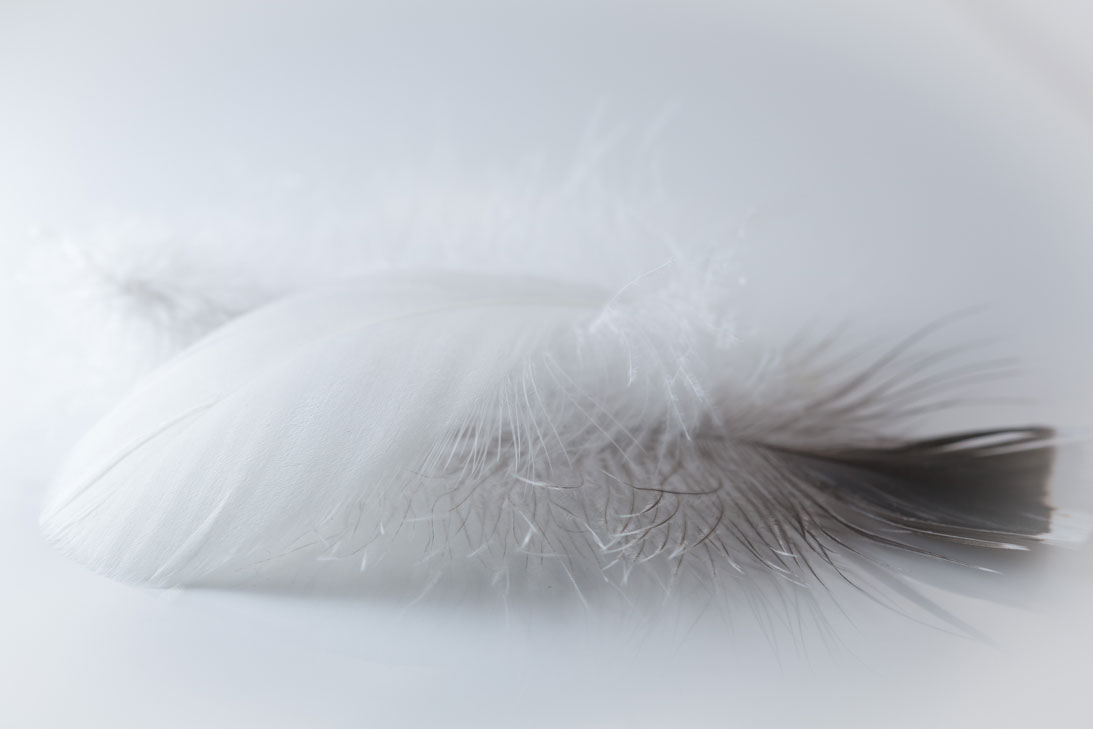What our customers say about us:
 18.02.24
D. B. (via Trusted Shops)
18.02.24
D. B. (via Trusted Shops)
 09.01.24
E.G. (via Trusted Shops)
09.01.24
E.G. (via Trusted Shops)
 22.12.23
S. B. (via Trusted Shops)
22.12.23
S. B. (via Trusted Shops)
 18.12.23
M. et I. (Trusted Shops)
18.12.23
M. et I. (Trusted Shops)
 17.12.23
M. G. (via Trusted Shops)
17.12.23
M. G. (via Trusted Shops)
 15.12.23
N. H. (via Trusted Shops)
15.12.23
N. H. (via Trusted Shops)
 08.12.23
L. G. (via Trusted Shops)
08.12.23
L. G. (via Trusted Shops)
 02.12.23
N. W. (via Trusted Shops)
02.12.23
N. W. (via Trusted Shops)
 26.11.23
Y. P. (via Trusted Shops)
26.11.23
Y. P. (via Trusted Shops)
 25.11.23
M. W. (via Trusted Shops)
25.11.23
M. W. (via Trusted Shops)
 23.10.23
T. C. (via Trusted Shops)
23.10.23
T. C. (via Trusted Shops)
 20.09.23
B. S., (via Trusted Shops)
20.09.23
B. S., (via Trusted Shops)
 18.09.23
C.H. de C. (par e-mail)
18.09.23
C.H. de C. (par e-mail)
 19.04.23
H. U. Sch. (via Trusted Shops)
19.04.23
H. U. Sch. (via Trusted Shops)
 25.03.23
Chr. M. (via Trusted Shops)
25.03.23
Chr. M. (via Trusted Shops)
 06.03.23
O. F. (via Trusted Shops)
06.03.23
O. F. (via Trusted Shops)
 06.03.23
A.-L. T., (via Trusted Shops)
06.03.23
A.-L. T., (via Trusted Shops)
 21.02.23
C. M. (par e-mail)
21.02.23
C. M. (par e-mail)
 20.02.23
F. H. (via Trusted Shops)
20.02.23
F. H. (via Trusted Shops)
 04.02.23
T. G. aus R. (via Trusted Shops)
04.02.23
T. G. aus R. (via Trusted Shops)
 25.01.23
N. G. aus S. (via Trusted Shops)
25.01.23
N. G. aus S. (via Trusted Shops)
 17.01.23
G. B. (via Trusted Shops)
17.01.23
G. B. (via Trusted Shops)
 16.01.23
A. S. (via Trusted Shops)
16.01.23
A. S. (via Trusted Shops)
 30.12.22
N. d. G. (via Trusted Shops)
30.12.22
N. d. G. (via Trusted Shops)
 14.12.22
T. S. (via WhatsApp)
14.12.22
T. S. (via WhatsApp)
 06.12.22
U. K. (via Trusted Shops)
06.12.22
U. K. (via Trusted Shops)
 06.12.22
J. L. (via Trusted Shops)
06.12.22
J. L. (via Trusted Shops)
 05.12.22
C. C. (via Trusted Shops)
05.12.22
C. C. (via Trusted Shops)
 05.12.22
B. M. (via Trusted Shops)
05.12.22
B. M. (via Trusted Shops)
 05.12.22
N. H. (via Trusted Shops)
05.12.22
N. H. (via Trusted Shops)
 04.12.22
M. G. (via Trusted Shops)
04.12.22
M. G. (via Trusted Shops)
 16.11.22
Chr. v. H. (via WhatsApp)
16.11.22
Chr. v. H. (via WhatsApp)
 08.11.22
Ch. v. H. (via e-mail)
08.11.22
Ch. v. H. (via e-mail)
 29.10.22
D. P. (via Trusted Shops)
29.10.22
D. P. (via Trusted Shops)
 22.10.22
R. D. (via Trusted Shops)
22.10.22
R. D. (via Trusted Shops)
 19.10.22
C. N. (via Trusted Shops)
19.10.22
C. N. (via Trusted Shops)
 07.10.22
St. S. (via Trusted Shops)
07.10.22
St. S. (via Trusted Shops)
 29.09.22
Ch. M. (via Blog-Kommentar)
29.09.22
Ch. M. (via Blog-Kommentar)
 12.09.22
M.G. (via Trusted Shops)
12.09.22
M.G. (via Trusted Shops)
 09.08.22
V.B. (via Trusted Shops)
09.08.22
V.B. (via Trusted Shops)
 02.08.22
U.G. (via Trusted Shops)
02.08.22
U.G. (via Trusted Shops)
 24.07.22
T.R. (via Trusted Shops)
24.07.22
T.R. (via Trusted Shops)
 19.07.22
S.H. (via Trusted Shops)
19.07.22
S.H. (via Trusted Shops)
 07.07.22
A.M. (via Trusted Shops)
07.07.22
A.M. (via Trusted Shops)
 01.07.22
Ch. S.-K. (via Trusted Shops)
01.07.22
Ch. S.-K. (via Trusted Shops)
 28.06.22
L.L. (via Trusted Shops)
28.06.22
L.L. (via Trusted Shops)
 23.06.22
H.S. (via Trusted Shops)
23.06.22
H.S. (via Trusted Shops)
 20.06.22
K.F. (via Trusted Shops)
20.06.22
K.F. (via Trusted Shops)
 19.06.22
V.E. (via Trusted Shops)
19.06.22
V.E. (via Trusted Shops)
 01.06.22
M.B. (via Trusted Shops)
01.06.22
M.B. (via Trusted Shops)
 28.05.22
R.M. (via Trusted Shops)
28.05.22
R.M. (via Trusted Shops)
 14.05.22
U.F. (via Trusted Shops)
14.05.22
U.F. (via Trusted Shops)
 19.04.22
B.S. (via Trusted Shops)
19.04.22
B.S. (via Trusted Shops)
 09.04.22
M.V. (via Trusted Shops)
09.04.22
M.V. (via Trusted Shops)
 08.04.22
E.B. (via Trusted Shops)
08.04.22
E.B. (via Trusted Shops)
 08.04.22
F.C. (via Trusted Shops)
08.04.22
F.C. (via Trusted Shops)
 23.03.22
S. E., (via e-mail)
23.03.22
S. E., (via e-mail)
 18.02.22
E.M.
18.02.22
E.M.
 11.02.22
V. B.-K.
11.02.22
V. B.-K.
 10.02.22
R.S.
10.02.22
R.S.
 10.02.22
I.T.
10.02.22
I.T.
 10.02.22
I.B.
10.02.22
I.B.
 09.02.22
Hj. L.
09.02.22
Hj. L.
 09.02.22
Th. B.
09.02.22
Th. B.
 09.02.22
P.-A. J.
09.02.22
P.-A. J.
 09.02.22
Hj. M.
09.02.22
Hj. M.
 09.02.22
S.P.
09.02.22
S.P.
 09.02.22
F.V.
09.02.22
F.V.
 31.01.22
L.D. (via e-mail)
31.01.22
L.D. (via e-mail)
 01.01.22
Ch.B.
01.01.22
Ch.B.
 13.12.21
G.W.
13.12.21
G.W.
 09.12.21
H.S.
09.12.21
H.S.
 02.12.21
V.W.
02.12.21
V.W.
 24.11.21
S.H.
24.11.21
S.H.
 15.11.21
I.St.
15.11.21
I.St.
 06.11.21
T.K.
06.11.21
T.K.
 29.10.21
R.B.
29.10.21
R.B.
 28.10.21
A.C.
28.10.21
A.C.
 27.10.21
K.K.
27.10.21
K.K.
 14.10.21
G.F.
14.10.21
G.F.
 06.10.21
K.K.
06.10.21
K.K.
 13.09.21
R.B.
13.09.21
R.B.
 09.09.21
M.S.
09.09.21
M.S.
 05.09.21
D.D.
05.09.21
D.D.
 02.09.21
S.H.
02.09.21
S.H.
 01.09.21
G.S.
01.09.21
G.S.
 27.08.21
Frau H. aus B.
27.08.21
Frau H. aus B.
 13.10.20
H.N.
13.10.20
H.N.
 25.08.21
H.A.
25.08.21
H.A.
 25.08.21
B. Sch.
25.08.21
B. Sch.
 18.08.21
E. B.-A.
18.08.21
E. B.-A.
 16.08.21
R.A.
16.08.21
R.A.
 16.08.21
R.S.B.
16.08.21
R.S.B.
 16.08.21
R.A.
16.08.21
R.A.
 13.07.21
Ch. A.
13.07.21
Ch. A.
 12.07.21
L.H.
12.07.21
L.H.
 07.07.21
B.L.C.
07.07.21
B.L.C.
 03.07.21
C.D.F
03.07.21
C.D.F
 01.07.21
V.P.
01.07.21
V.P.
 26.06.21
C.W.
26.06.21
C.W.
 18.06.21
M.W.
18.06.21
M.W.
 23.06.21
P.D.
23.06.21
P.D.
 11.06.21
I.B.
11.06.21
I.B.
 08.06.21
A.V.A
08.06.21
A.V.A
 01.06.21
B.F.
01.06.21
B.F.
 28.05.21
S. St.
28.05.21
S. St.
 22.05.21
A.B.
22.05.21
A.B.
 11.05.21
I.A. aus O.
11.05.21
I.A. aus O.
 10.05.21
M.P.
10.05.21
M.P.
 06.05.21
W.T.
06.05.21
W.T.
 04.05.21
D.C.
04.05.21
D.C.
 02.05.21
G.L.
02.05.21
G.L.
 01.05.21
I.B.
01.05.21
I.B.
 28.04.21
A. + A.C.
28.04.21
A. + A.C.
 22.04.21
M.W.
22.04.21
M.W.
 21.04.21
W.G.
21.04.21
W.G.
 19.04.21
M.M.
19.04.21
M.M.
 16.04.21
S.B.
16.04.21
S.B.
 15.04.21
K.F.
15.04.21
K.F.
 14.04.21
S.S.
14.04.21
S.S.
 13.04.21
M.W.
13.04.21
M.W.
 12.04.21
T.M.
12.04.21
T.M.
 08.04.21
D.K.
08.04.21
D.K.
 04.04.21
H.N.
04.04.21
H.N.
 02.04.21
C.S.
02.04.21
C.S.
 03.03.21
F.O.
03.03.21
F.O.
 24.02.21
L.B.
24.02.21
L.B.
 24.02.21
A.T.
24.02.21
A.T.
 14.02.21
M.P.
14.02.21
M.P.
 12.02.21
P.A.C
12.02.21
P.A.C
 11.02.21
U.W.
11.02.21
U.W.
 05.02.21
C.B.
05.02.21
C.B.
 27.01.21
L.H.
27.01.21
L.H.
 08.01.21
T.M.
08.01.21
T.M.
 01.01.21
C.F.
01.01.21
C.F.
 24.12.20
H.B.
24.12.20
H.B.
 18.12.20
M.H.
18.12.20
M.H.
 13.12.20
A.C.
13.12.20
A.C.
 12.12.20
J.J.
12.12.20
J.J.
 07.12.20
H.G.
07.12.20
H.G.
 04.12.20
K.W.
04.12.20
K.W.
 02.12.20
E.S.
02.12.20
E.S.
 01.12.20
M.H.
01.12.20
M.H.
 01.12.20
I.K.
01.12.20
I.K.
 29.11.20
E.W.
29.11.20
E.W.
 26.11.20
G.B.
26.11.20
G.B.
 26.11.20
C.S.
26.11.20
C.S.
 25.11.20
D.R.
25.11.20
D.R.
 25.11.20
C.A.
25.11.20
C.A.
 25.11.20
C.F.
25.11.20
C.F.
 25.11.20
S.M.
25.11.20
S.M.
 25.11.20
D.R.
25.11.20
D.R.
 25.11.20
p-l
25.11.20
p-l
 25.11.20
P.G.
25.11.20
P.G.
 25.11.20
B.S.
25.11.20
B.S.
 25.11.20
C. aus G.
25.11.20
C. aus G.
 25.11.20
D.Z.
25.11.20
D.Z.
 25.11.20
C.W.
25.11.20
C.W.
 23.11.20
A.S.
23.11.20
A.S.
 06.10.20
U.W.
06.10.20
U.W.
 20.11.20
Herr P.H. aus M.
20.11.20
Herr P.H. aus M.
 18.11.20
Frau G.K.
18.11.20
Frau G.K.
 12.11.20
E. R.-B.
12.11.20
E. R.-B.
 10.11.20
C.B.
10.11.20
C.B.
 04.11.20
B.C.
04.11.20
B.C.
 03.11.20
H.J. und D.G. aus Z.
03.11.20
H.J. und D.G. aus Z.
 29.10.20
Esther G.
29.10.20
Esther G.
 23.10.20
Alessio C
23.10.20
Alessio C
 24.09.20
Olaf O.-O.
24.09.20
Olaf O.-O.
 21.09.20
Amer Al-L.
21.09.20
Amer Al-L.
Très satisfaite
Tolles Team, besten Dank für die Hilfsbereitschaft und den freundlichen Empfang in dem Showroom :-)
Ich kanns nur weiterempfehlen!
Alles tiptop. Die Qualität der Duvets ist top
Ce qui nous a convaincu par l'achat de ces produits, sont
- le fait qu'ils soient confectionnés en Suisse
- avec des matériaux européens
les duvets sont incroyablement légers, mais à la fois très chauds, livraison ultra rapide, tout simplement parfait.
merci, M. et I.
J'ai acheté cette couette 4 saisons Goose Premium 260x240 cm et la qualité de cette couette est extraordinaire. (...) Perso, je trouve que le prix qualité est top
J'ai reçu mon colis dans les délais. Tout est parfait. Je recommande DuvetSuisse! Merci.
Conforme à mes attentes, chaud et léger, le petit plus hivernal !
Alles ist sehr gut: persönlicher Kontakt und Beratung, prompte Lieferung. Hochwertige Verpackung, wunderschöne Ware.
5 étoiles - très bien
Die Bestellung hat reibungslos geklappt und ich wurde regelmässig über den Bestellvorgang informiert. Das erhaltene Produkt entspricht voll und ganz unseren Erwartungen wir sind super zufrieden mit der Qualität vielen Dank
5 Sterne - sehr gut!
Das Duvet ist sehr angenehm, weich und gibt eine tolle Wärme ab.
Oui en effet si je commande à nouveau chez vous pour mes enfants cette fois-ci, c'est bien que je suis ravie des duvets que je vous ai acheté il y a deux ans. Merci de ce beau travail que vous faites !
sehr gut. gute Webseite, prompte Lieferung
La réactivité, la rapidité, le sens de l'humour, la qualité du duvet, la courtoisie
Einwandfrei in jeder Hinsicht.
Livraison rapide; la couette correspond pleinement à mes attentes. Je suis curieuse d’expérimenter le lavage en machine qui évite un nettoyage chimique.
Ce message pour vous dire que je suis très contente de mon duvet d’hiver. Il me convient parfaitement.
Merci de vos précieux conseils, je ne manquerez pas de faire appel à vous.
Gute Produkt-Qualität und flotter Service
Unkomplizierte Bestellung, gute Zahlungsoptionen, zuverlässige Lieferung innerhalb der angegebene Lieferzeiten und vor allem eine hervorragende Qualität der Ware.
Service très professionnel. Rapide dans la livraison. Matériel de qualité. Je recommande vraiment ce site.
Le choix et la rapidité de l'envoi
Super service. Besten Dank.
Sehr schöne Qualität! Lieferung ultra schnell. Jederzeit gerne wieder! Sehr zu empfehlen.
Nous tenions à vous écrire afin de vous remercier vivement pour la qualité de vos duvets, du bon conditionnement de ceux-ci, de votre rapidité de fabrication et de livraison. De plus la commande sur internet a été facile et exacte lors de la réception à domicile. Se qui est très appréciable.
Einwandfreie und schnelle Lieferung. Produkt 1A. Kann ich nur weiterempfehlen
Gutes Duvet, guter rascher Service, sorgfältige Verpackung. Danke
Gekauft: Duvet 'Light Duck Basic', 135/140 x 200 cm
Tout est bien, merci
Articles achetés: couette 'Light Duck Basic', 160 x 210 cm, oreiller 'Forte Standard', 60 x 60 cm
Schnell und unkomplizert und einfach ein super Duvet...mein zweites!
Hat folgenden Artikel gekauft: Duvet Special Promo Medium, 160 x 210 cm
Ich bin sehr begeistert. Die Duvets sind leicht und halten trotzdem extrem warm, ohne das man darin schwitzt. Zu loben ist auch der Kundenservice, sehr entgegenkommend und kundenfreundlich. Gerne empfehle ich Sie weiter und werde bei einer weiteren Gelegenheit, wieder bei Ihnen bestellen.
Gekaufte Artikel: Duvet 'Medium Duck Basic', 160x210 cm und Kissen 'All in One Flexi Premium', 40x60 cm
Très bien! 5 étoiles.
Article acheté: Couette 'Warm Goose Premium', 200 x 210 cm
Übrigens mein Duvet das ich vor ca. 2 Jahren bei Ihnen gekauft habe war einer meiner besten Käufe.
J'ai bien reçu ma nouvelle couette et elle est merveilleuse! J'ai déjà passé 2 nuits avec, comme sur un nuage. Je sui ravie! Et mon chat aussi!! Merci encore pour la qualité de votre service et votre produit.
Super duvet
Ich gebe duvetsuisse.com 5 Sterne! Sehr gut!
Ich gebe 5 Sterne - sehr gut!
5 Sterne - Sehr gut!
Très bon service ! Merci ! Rapide , emballage soigné , parfait
5 Sterne! - Sehr gut!
Sehr rasche Lieferung, alles ok
Sehr gut!
Très bien! - je donne 5 étoiles!
Service und Qualität eins A
Very good!
Sehr gut!
The pillow is exactly what I wanted--a soft pillow with a bit of support, a beautiful Swiss-quality product, excellent customer care, fast delivery.
Haben das Duvet nur auf Basis der Beschreibung ausgesucht und bestellt.
Die Lieferung und das Produkt, einwandfrei.
Bonne qualité. Livraison rapide.
Schnelle Lieferung, angenehme und gute Qualität der Bettdecke. Qualität und Inhalt der Decke genau beschrieben
Molto bene!
Très bien!
Sehr gut!
Sehr schnelle Lieferung. Es sind Menschen in der Firma, die nachfragen, wenn bei der Bestellung etwas unklar ist. Das Duvet ist einfach herrlich. Werde das weiterempfehlen..
Tout a été parfait
Danke!
Unsere Gäste freuen sich auf die tollen Kissen.
Par le présent, je tenais à vous remercier pour les conseils pour la couette et les oreillers…nous avons passé notre première nuit avec et ils sont parfaits !!!
5 STERNE, Sehr Gut!
Freundliche, kompetente Beratung, schnelle Lieferung, wohliges, leichtes Duvet
4 ETOILES, Très bien!
5 ETOILES, Très bien!
Produit de qualité
Service rapide. Belle qualité dans les matériaux. Je suis de plus ravie car c'est local. SUISSE. administration tip top.
Besser geht‘s gar nicht
Nachdem wir mit unserem neu erworbenen Winter-Duvet so extrem zufrieden sind, haben wir sofort auch noch neue Kopfkissen geordert. Wir sind ja sowas von zufrieden und glücklich! Die Breite des Sortiments, die extrem hohe Qualität - auch der Verarbeitung, der freundliche und kompetente Service samt Beratung, die rasche Lieferung … Genau so sehen Exzellenz-Betriebe aus. Wir danken euch sehr.
Alles gut
Übersichtliches, gut gegliedertes Angebot, einfacher Bestellvorgang (auf Rechnung), super-schnelle Lieferung (v.A. wenn man bedenkt, dass die Duvets auf Bestellung hergestellt werden), tolle Qualität der Produkte.
Gibt nichts zu meckern und werde in Zukunft sicher wieder eine Bestellung hier in Erwägung ziehen.
très satisfait, merci encore +++
4 STERNE, Sehr Gut!
Très bon service de livraison et excellent rapport qualité/prix. Je recommande.
J'avais hésité au niveau degré de chaleur entre 2 ou 3, j'ai choisi 2 et c'est amplement suffisant.
5 ETOILES, Très bien!
Bonjour Monsieur,
Mille mercis pour votre rapidité, j’ai déjà pu dormir dans votre (et désormais mien!) magnifique duvet!
Bonne suite et meilleures salutations, L.D.
5 STERNE, Sehr Gut!
5 STERNE, Sehr Gut!
Superbe qualité, livraison très rapide, bons conseils, merci !
Wirklich TOP!
Ich danke Ihnen für die top Beratung und die exzellente Deklaration.
Das Gefühl von guter Qualität freut sehr.
Und mit dem Schweizerkreuz schwingt noch ein bisschen Nationalstolz mit
Sehr nette Auskunft am Telefon und schnelle Lieferung.
Gute, persönliche Beratung, rasche Lieferung
5 STERNE, Sehr Gut!
5 ETOILES, Très bien!
Grüezi Herr Corpina
Ich wollte mich ganz herzlich bedanken für die wundervollen Decken und Ihre Beratung.
Mein Mann und ich sind super zufrieden und wir lieben die Duvets jetzt schon. Es ist ein
traumhaftes Schlaferlebnis.
Ich habe soeben die Decken an unsere Familie weiterempfohlen. Die werden vermutlich auch
noch bei Ihnen bestellen.
An dieser Stelle ein herzliches Dankeschön, für ihre Arbeit.
Ich bin sehr feinfühlig und spüre wie Ihre Duvets in sorgfältiger und wertvoller Verbindung mit der
Natur hergestellt wurden. Danke dafür.
Grazie il piumino è fantastico
Wundervolle und herzliche Beratung. Vielen Dank!
alles zu bester Zufriedenheit !
Schnelle Lieferung, super Qualität der Ware und bester Kundenservice.
Super Beratung und super Service. Sehr zufrieden
Trotz Internet-Bestellung erhielt ich noch eine sehr umfassende und aufklärende persönliche
Beratung am Telefon, bei dem nochmals auf das gekaufte Produkt ergänzend eingegangen
wurde und Fragen beantwortet wurden.
Vielen Dank für den Superservice das Produkt ist top und die Beratung war sensationell gerne
wieder
Sehr geehrter Herr Corpina
Herzlichen Dank für die freundliche Unterstützung bei dem Kauf des Duvets. Jetzt kann die kalte
Jahreszeit getrost kommen. Ich bin sicher, wir werden zufrieden sein.
Merci vielmals für die gute Kommunikation und Beratung aus der Ferne. Das habe ich sehr
geschätzt. Mit freundlichen Grüssen, Frau H. aus Basel.
I was looking for the best quality available because I value a good night's sleep. I bought my 4-
Seasons Goose Premium and the two Premium pillows from you because you offer an excellent
information and advice, good prices and a fast and efficient service. Many thanks!
Jederzeit wieder!
Schnelle Lieferung, Produkt entspricht den Erwartungen, gutes Preis-Leistungsverhältnis.
Grazie per la sua gentilezza e professionalità. E complimenti per il suo bellissimo sito. Mi sono trovata subito a mio agio. Le descrizioni dei prodotti, le spiegazioni... tutto chiarissimo e ben fatto.
Sehr gut
alles bestens!
Besten Dank für den freundliche Service und die prompte Lieferung. Mit besten Grüssen, R.A.
Super Qualität und schnelle Lieferung
Alles tiptop und das Kissen ist wunderbar bequem. Absoluter Unterschied zu anderen Kissen! Versand war sehr schnell, sowie wurde das Kissen einwandfrei verpackt.
Bin super zufrieden, sei es mit der Vorab-Beratung, mit der sehr raschen Lieferung, wie auch die Ware hervorragend verpackt und beschrieben. Dann schlussendlich das unglaublich neue Schlafgefühl - tolle Kissen! Rundum eine glückliche Kundin. B.L.C. aus A.
Alles tip top
Un site d'excellence; les produits sont de très grande qualité.
Schnelle Lieferung. Ich bin sehr zufrieden mit dem Duvet und schlafe viel besser als vorher.
Das Duvet ist super leicht. Ich freue mich jeden Abend darauf. Die Lieferung war sehr schnell und einwandfrei.
Danke für die schnelle Lieferung! Ich habe das Kissen ausprobiert und habe sehr, sehr, sehr gut geschlafen! Ich habe keine Nackenschmerzen mehr und habe nach langer Zeit endlich wieder einmal durchgeschlafen!
Sehr freundliche Kommunikation und Kundenservice auf persönlicher Ebene. Sorgfältige Verpackung der Ware. Und danach die Freude auf eine gute Nacht in diesen herrlichen Duvets! Herzlichen Dank.
toller kundenservice
Super Service, very good products.
Très bon suivi, très sympa, livraison rapide. Tout ok, je recommande vivement!
Das Duvet wird in einem kompakten Aufbewahrungsbeutel geliefert. Lieferung ging rasch, alles sauber und sorgfältig verpackt. Macht einen guten und qualitativ hochwertigen Eindruck. Nach den ersten Nächten kann ich nur sagen, es schläft sich gut mit dem neuen Duvet.
Letzten Herbst haben wir bereits 2 Duvets bei duvetsuisse.com bestellt und sind sehr zufrieden damit, wir schwitzen überhaupt nie unter diesen Duvets. Nun wollten wir noch 2 Kopfkissen dazu und haben uns für das All-in-One-Flexi entschieden, da es aus einem Kissen mit einer leicht waschbaren Hülle aus Daunen besteht.
Livraison super rapide !
Es hat alles perfekt geklappt, alles bestens, alle sehr zufrieden. Dankeschön.
super
Confiance , service, amabilité. Merci beaucoup ❤
Alles super
Grazie mille per il consiglio professionale e lo svolgimento efficiente. Tutto ha funzionato meravigliosamente e senza complicazioni. Dormiamo molto meglio e ci sentiamo molto bene. Possiamo decisamente raccomandare Duvetsuisse.
Kompetent, engagiert, vertrauenswürdig.
Bei der Suche nach neuen Duvets sind wir im Internet auf die Website von DUVETSUISSE gestossen. Die grosse Auswahl an Duvets jeder Grösse und Qualität hat uns angesprochen und überzeugt. Wir bestellten schliesslich Duvets via Internet in einer nicht oft verlangten Grösse und erhielten sie zu unserer Freude schon am übernächsten Tag per Post nach Hause geliefert. Seither geniessen wir das neue Duvet-Gefühl jeden Abend von neuem - hervorragende Qualität zu einem guten Preis. Absolut empfehlenswert!
Informative websites, faster delivery than stated, super comfortable and soft pillow, super quality.
Super angenehmes und leichtes Daunenduvet, Qualität ist auch top.
Ich wäre sehr gerne zu Ihnen in den Showroom gekommen, aber leider kann ich nicht mehr gut laufen und danke Ihnen vielmals für Ihre kompetente telefonische Beratung. So schnell bin ich zu einem guten Duvet gekommen! Ich freue mich!
duvetsuisse.com est le meilleur site pour la literie que j'ai trouvé sur internet. J'en ai comparé plusieurs et je revenais toujours vers vous. Si sérieux, clair et concis. Les descriptions et les avis sont incomparables. Merci !
Ich muss Ihnen für Ihre Webseite ein grosses Kompliment machen. Es ist alles sehr gut beschrieben und sehr attraktiv präsentiert! Und ich habe endlich meine spezielle Grösse gefunden, die zu unserer schönen Bettwäsche passt! Danke!
Thank you - it was a pleasure speaking with you this morning, thank you for the fabulous service.
Top! Prompte und freundliche Beratung, umfassende Auswahl in allen denkbaren Formaten, Swiss-made Ware und Qualität, die Freude macht. Ich komme wieder!
Hat alles gepasst. Gerne wieder. kann ich nur empfehlen
Nutze nun seit ca. einem Monat das "All in One Flexi Premium"-Kissen 50x70 und bin sehr zufrieden damit. Dank dem mitgelieferten Nachfüllbeutel kann man die gewünschte Stützkraft optimal einstellen. Die Verarbeitung wirkt sehr hochwertig, wodurch gegenüber meinem vorherigen Kissen auch nichts raschelt. Top Qualität, kann es definitiv weiterempfehlen.
Couette chaude et agréable
Sehr geehrter Herr Corpina
wir teilen Ihnen mit, dass wir mit den erhaltenen Duvets sehr zufrieden sind. Mit gutem Gewissen können wir unsern Freunden Ihre Firma resp. Ihre Artikel, weiterempfehlen. Freundliche Grüsse
"Bonsoir Monsieur Corpina,
Je vous remercie pour votre réponse ainsi que pour votre proposition que j’accepte avec plaisir.
Je tiens à sincèrement vous remercier pour votre solution car il est rare de nos jours de trouver des entreprises qui sont aussi arrangeantes et qui font tout pour conserver la satisfaction de leur clientèle.
Étant à la recherche d’un duvet également et envisageant plusieurs boutiques, c’est avec plaisir que je passerai commande demain d’un duvet auprès de vous par le biais de votre site internet.
En vous remerciant encore pour vos efforts, je vous prie de croire, Monsieur Corpina, à mes salutations les meilleures. "
sehr gute website mit genügend infos zum auslesen.
Ich wurde zuvorkommend und freundlich behandelt und werde die duvetsuisse.com gerne weiter empfehlen.
Rundum zufrieden, empfehlenswert.
Bin sehr zufrieden und meine Erwartungen wurden mehr als erfüllt und ich werde noch weitere Daunenduvets bestellen !!!!
Alles Bestens!!
Superglue, danke
Immer ausgezeichnete Beratung und Top-Lieferservice, die Produkte sind super.
Sehr gute Qualität, kurze Lieferzeit, alles perfekt.
Hervorragender Service und beste Qualität! Danke!
Erleichterung fand statt, als wir bemerkten, dass wir für die Bettwäsche nicht noch ein zusätzliches Geschäft aufsuchen mussten, oh nein, auch dafür ist im Hause duvetsuisse.com gesorgt. Zeitdruck, Ungeduld ist nicht das Thema, alles ist leicht und unbeschwert. Der Einkauf tut gut, fühlt sich fachmännisch ‚eingebettet‘ an, so wie es nun die Daunen tun, die wir schon ein paar wenige Tage ins Haus geliefert bekamen. Wir können dieses Einkaufserlebnis von Herzen weiterempfehlen und wünschen duvetsuisse.com eine frohe, unbeschwerte Zukunft, trotz allem, was sich an Ereignissen tummelt. Unter dem Duvet ist es ganz ruhig, man ist so wie auf Tauchstation.
Schnelle einfache Lieferung, schlafe sehr gut damit.
Beratung, Service etc. vom Feinsten.
Sehr netter Kontakt und reibungslose, professionelle Abwicklung - herzlichen Dank!
Alles bestens geeignet!
Sehr guter Shop, schnelle Lieferung und ausgezeichnete Qualität. Wir sind begeistert.
Super Service.
Wir sind so richtig glücklich mit unseren neuen, leichten und warmen Duvets. Wir brauchen in dieser kalten Zeit keine Wärmeflasche mehr. Es ist jede Nacht ein schönes , wohliges Gefühl, einfach wunderbar. DANKE
Sehr gutes Unternehmen.
Bin sehr zufrieden. Gute Wahl.
Schöne und gute Qualität
Supper
Ausgezeichnete Beratung vom duvetsuisse Team für das richtige Duvet, die Lieferung ist schnell hiergewesen und das Wichtigste: Das Duvet ist super!
Wunderbar, alles
Meine Schlafqualität hat sich deutlich verbessert seit dem Kauf meines neuen Duvets. Das Preis-Leistungs-Verhältnis, sowie auch der Kundenservice sind hervorragend.
Alles perfekt gelaufen, super Qualität.
Good
quality of the product and customer service deserve 5 stars !
Professional advice was very useful and everything else was flawless.
Passt alles
super schnelle Lieferung, sehr kompetente Beratung. Werde wieder dort einkaufen.
Top Qualität einfach und unkompliziert bestellt und geliefert.
Sehr zufrieden mit Service und Ware
Dear Mr. Corpina, What a wonderful surprise we had this morning. I have always been impressed by Swiss efficiency but your Company is the BEST. Thank you so much for the beautiful pillows and the face masks. I will certainly recommend your Company's products. Best wishes to you and all your staff. Stay safe and have an enjoyable weekend, P.H.
Ich habe Ende September das Duvet Medium Top in der Grösse 240x210 cm gekauft und wir sind total happy damit! Es ist einfach sensationell, wunderbar kuschelig und leicht und wärmend… und die Qualitäts-/Preisleistung ist einfach unschlagbar. Danke vielmals!
Ich habe euch zum Glück im Internet gefunden, und ich muss sagen, ich habe viele Anbieter miteinander verglichen. Bei euch ist der Einkauf schon sehr attraktiv und auch sehr lukrativ, diese Qualität zu diesen Preisen. Es ist unglaublich. Ich freue mich sehr!
Cher Mr Corpina, Juste vous remercier de la couette j’en suis très contente, quel beau travail et quel confort de sommeil ! J’ai deja bien recommandé votre entreprise dans mon entourage privé et professionnel. Belle suite à vous.
Je vous remercie à nouveau pour votre service de haute qualité et vous adresse mes plus sincères salutations
Wir sind aufgrund der vielen positiven Kundenreaktionen zu Ihnen in den Showroom gekommen. Ihr überaus freundlicher Empfang, die kompetente Beratung und Ihre Leidenschaft für den guten Schlaf haben uns tief beeindruckt. Wir freuen uns auf unser schönes Duvet und Kissen! Herzliche Gratulation und weiter so!
"Ich habe das Kissen „All in One Flexi Premium“ bestellt, weil ich ich die Höhe und Stützkraft anpassen kann. Und weil es für Bauch-, Seiten- und Rückenschläferinnen geeignet ist. Nach den ersten Nächten bin ich begeistert: Ich bin sehr wohl damit und geniesse einen entspannten Schlaf, ob ich nun auf der Seite, dem Rücken oder Bauch liege.
Was ich auch schätze: Das Kissen ist sehr schön und liebevoll verarbeitet. Auch die Verpackung ist sehr sorgfältig und alle Infos sind übersichtlich aufgeführt.
Ich habe das Kissen am Donnerstag bestellt und am Montagabend stand das Paket schon vor meiner Tür.
Kurz und gut: Wunderbares Produkt, toller Service!"
Ich bin Seitenschläfer und mehr als zufrieden mit meinem All-in-one Flexi Premium Kissen. Innert 2 Tagen nach Bestellung ist es bei mir eingetroffen. Das Kissen ist weich aber stützt trotzdem sehr angenehm. Der mitgelieferte Nachfüllbeutel ist ideal um seine gewünschte Stützkraft "einzustellen". Es ist hochwertig verarbeitet und man spürt förmlich die Premium Qualität, made in Switzerland! Ich freue mich auf weitere erholsame Nächte mit meinem neuen Kissen.
"Wir haben im Showroom eine sehr gute und professionelle Beratung geniessen können und uns vorerst zum Kauf von 2 Kissen entschieden. Der Service und die Lieferung waren top und für mich stimmt das Preis/Leistungsverhältnis.
Nachdem wir einige Jahre auf Nackenstützkissen mit Schaumstofffüllung geschlafen hatten, war es natürlich erst einmal gewöhnungsbedürftig auf den Federkissen zu leigen. Aber die Umstellungsphase hat nur kurz gedauert. Der Schlafkomfort ist sehr angenehm und durch standardmässig gegebene Möglichkeit zum Nachfüllen der Federn kann man die Stützwirkung seinen Bedürfnissen gut anpassen.
Ich bin sicher, dass wir uns, wenn dann der Ersatz unseres Duvets ansteht, wieder an die Tinusan AG wenden werden."
Extrem zufrieden! Habe mir ein premium Kissen bestellt und schlafe seitdem viel besser! Top Qualität, super Beratung, schnell und unkompliziert! Danke!


